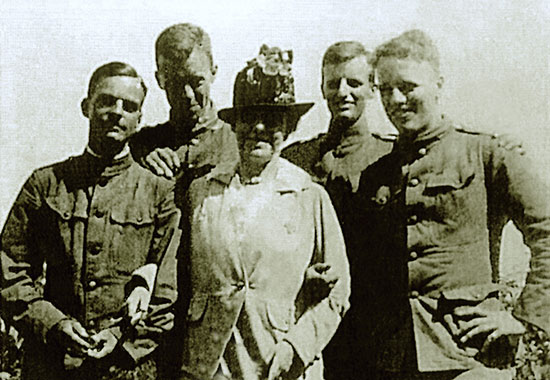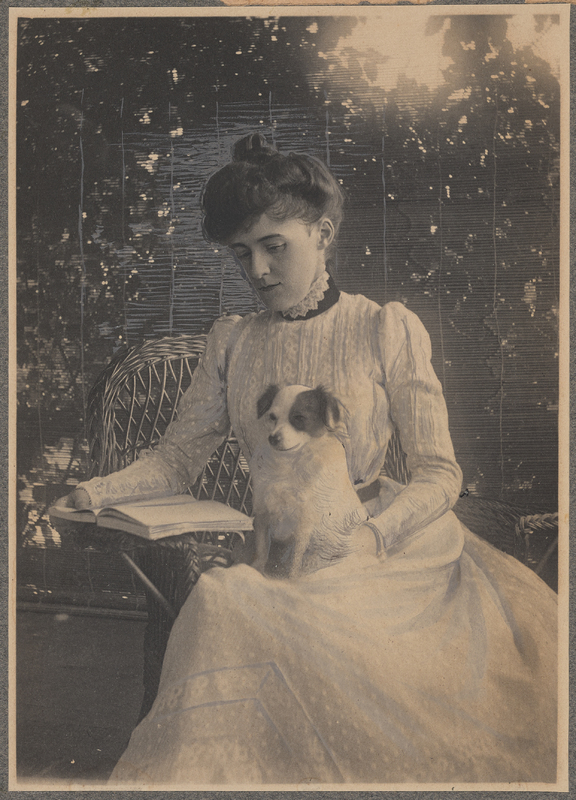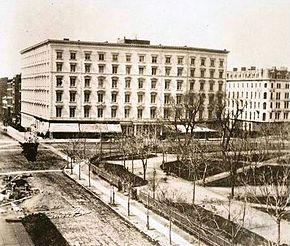 On February 14, 2018, the Times Literary Supplement published a newly discovered lecture by Edith Wharton, “France and Its Allies at War: The Witnesses Speak,” translated by Virginia Ricard (University of Bordeaux). Professor Ricard is co-editor of volume 29, Translations and Adaptations, of the Complete Works of Edith Wharton, a 30-volume series under contract at Oxford University Press.
On February 14, 2018, the Times Literary Supplement published a newly discovered lecture by Edith Wharton, “France and Its Allies at War: The Witnesses Speak,” translated by Virginia Ricard (University of Bordeaux). Professor Ricard is co-editor of volume 29, Translations and Adaptations, of the Complete Works of Edith Wharton, a 30-volume series under contract at Oxford University Press.
The entire lecture is online at https://www.the-tls.co.uk/articles/public/america-at-war-wharton/ (Image courtesy of this site.)
Here is the introduction:
On February 8, 1918, in a series called “France and Its Allies at War: The Witnesses Speak”, Edith Wharton gave a lecture in French to an audience of about 400. Why had the United States entered the war with such enthusiasm? How could Americans, who were only interested in money-making, be ready to fight? The lecture, which appears here for the first time in English and in edited form, was an attempt to answer these questions. It reveals Wharton’s interest in the early American settlers’ lasting contribution to democracy, and displays her wide – and generally unsuspected – knowledge of American history.
Virginia Ricard
- How did you happen to discover this piece?
In France we have an extraordinary tool, Gallica, a digital library created by the Bibliothèque nationale. Like the Internet Archive, it constantly expands the amount of material it makes available and improves accessibility. Over the years, I have downloaded anything and everything concerning Wharton or by Wharton that I found on Gallica. “L’Amérique en guerre” was published in the Revue hébdomadaire on 2 March 1918, and the review was uploaded by Gallica in December 2013. I read the lecture, among other things, soon afterwards. But it was in Washington, in July 2016, as I listened to Alan Price’s paper that I realized just how interesting it was. So the credit really goes to Alan. When I began looking at the translation work required for the Complete Works of Edith Wharton, I realized that “L’Amérique en guerre” had never been published in English and so I set to work on it. As I did so, I thought 2018 seemed the right moment to publish it—just a hundred years after Wharton gave her lecture and a little over a hundred years after the United States entered the war—still an important event in Europe although I think all but forgotten in the United-States.
- What can you tell us about this lecture? Do we know how it was received by those who heard it?
“L’Amérique en guerre” was part of a series organized in 1918 by the Société des conferences, that is, a lecture society that worked closely with the Revue hébdomadaire in which the lectures were regularly published. This particular lecture was one of ten called Paroles de témoins—The Witnesses Speak. The nine other speakers were politicians, members of the Church, and writers, all closely involved in the conflict for various reasons. I think is is pretty clear why the organisers asked Wharton to take part. She had influenced American opinion, which the French saw as an essential factor in the American decision to enter the war, and she had contributed to the war effort in France. So she was, in that sense, “a witness.”
Here again, Alan Price provided important information about who heard the lecture, much of which comes from a letter Wharton wrote to Alice Garrett in March 1918. Sharon Kim, whom I also met in Washington, was kind enough to send me photographs of the letter. I am fairly certain that the lecture took place at the Société de géographie, on the boulevard Saint Germain where the Société des conferences held most of their lectures. The hall can still be visited. We know that there were about 400 people present, including Paul Bourget, the American Ambassador (invited by Wharton), Walter Berry, the Tylers, Ronald Simmons, Raymond Recouly, and a few académiciens including René Doumic, who was the director of the Société des conférences as well as the editor of the Revue des deux mondes. But there were certainly many others present on whom the lecture left a lasting impression. Three years later, also in the Revue hebdomadaire, Marc Logé (the pen name of Marie-Cécile Logé), a fairly well-known translator and woman of letters, began an article on “Les Fondateurs de la littérature américaine” (“The Founders of American Literature”) with a long quote from Wharton’s lecture. That’s just one example.
- In several of her letters, Wharton, or her secretary, replies to requests for lectures by saying something like “Mrs. Wharton never gives public lectures.” What is special about this lecture, and why did she give it?
As I see it, Wharton was very, very concerned by the future of Europe and also very glad when the Americans entered the war. We have to remember that in February 1918, the war was far from over, and Wharton was probably ready to do anything she could to contribute to the the victory of the Allies. But you are right: in her letter to Alice Garrett, she says, “I would have given my boots (quite an expensive gift nowadays) to be in the hall instead of on the platform, & see myself, (never having uttered one word in public in any tongue!) sitting houghtily [sic] on a lofty ‘estrade’.”
- What can you say about Wharton’s writing style in French? Are her word choices unusual in any way? Does her style in French resemble her style in English, or does she make different choices—which, of course, might be because this was meant to be delivered as a speech rather than in writing? Does her language suggest that she’s attempting to reach out to the audience by incorporating references to common cultural events?
To be perfectly honest, the lecture, is in some ways an odd document. And from that point of view, I think the TLS did a superb editing job—for their purposes in any case—by simply cutting some of the longueurs—some of which will nevertheless interest Wharton scholars I think. The way Wharton goes about her task, talking first about language, then about history and only at the very end discussing the question of the war, is at first a little surprising. Some of her formulations also strike me as a little odd and I don’t think a native French speaker would have expressed himself in exactly the same way.
But I found her approach very astute. She obviously had a clear understanding of what we now call communications and she sets out to address the preconceptions of the French audience she had before her. They had all seen Abel Hermant’s play, Les Transatlantiques, which makes fun of rich but ignorant Americans. Just to give you an idea of how well known the play was at the time, Sandor Ferenczi, in a letter to Freud, wrote that Hermant’s play was “the best parody of the Americans.” (The allusion to Les Transatlantiques is not included in the edited version of the lecture.) Wharton suggests that things were not quite so simple and that in the beginning the New World was not merely a money-making enterprise. Once she has punctured French prejudices, she provides her own interpretation of American history: religious fanaticism alongside the enjoyment of life’s pleasures, centrifugal forces opposed to centripetal forces. She is never dogmatic or manichean: the fanatic Puritans provided mankind with one of the great democratic institutions, the town-meeting, and she makes the Dutch, whom she otherwise lauds, reponsible for introducing slavery.
- Was there anything that surprised you about this lecture? Any sentiments that you hadn’t heard her express before in, say, French Ways and Their Meaning or other war writings?
Well, yes. Here Wharton is very clearly looking at America from the point of view of France, something she does in her fiction but not quite as explicitly. She finds many positive things to say about it. She seems to me to be more knowledgeable about American history than I would have thought and she clearly has a worldview, has thought about the meaning of the New World and the different forces at work in history and her own place in that history. I was surprised at how clearly she comes out on the side of free public education, religious freedom, freedom of the press, Wilson’s Society of Nations, what she calls “centripetal forces” and more generally the “boundless ambitions” of the young—read new ideas. In A Backward Glance, Wharton expresses a taste for sophisticated pleasure-loving societies. Here she confirms that taste but also seems to have more democratic ideas than she is often given credit for. And I like her intellectual honesty, a quality she praises in French Ways, in defending the idea of the Society of Nations, for example, (even though I believe she was not exactly a great friend of Wilson’s) before the war was even over. I also like her willingness to face up to her audience, some of whom were skeptical about the ability of a country like the United States to fight at all. All in all I was surprised at how modern Wharton was.




 “She was bad . . . always. They used to meet at the Fifth Avenue Hotel.”
“She was bad . . . always. They used to meet at the Fifth Avenue Hotel.” On February 14, 2018, the Times Literary Supplement published a newly discovered lecture by Edith Wharton, “France and Its Allies at War: The Witnesses Speak,” translated by Virginia Ricard (University of Bordeaux). Professor Ricard is co-editor of volume 29, Translations and Adaptations, of the Complete Works of Edith Wharton, a 30-volume series under contract at Oxford University Press.
On February 14, 2018, the Times Literary Supplement published a newly discovered lecture by Edith Wharton, “France and Its Allies at War: The Witnesses Speak,” translated by Virginia Ricard (University of Bordeaux). Professor Ricard is co-editor of volume 29, Translations and Adaptations, of the Complete Works of Edith Wharton, a 30-volume series under contract at Oxford University Press.